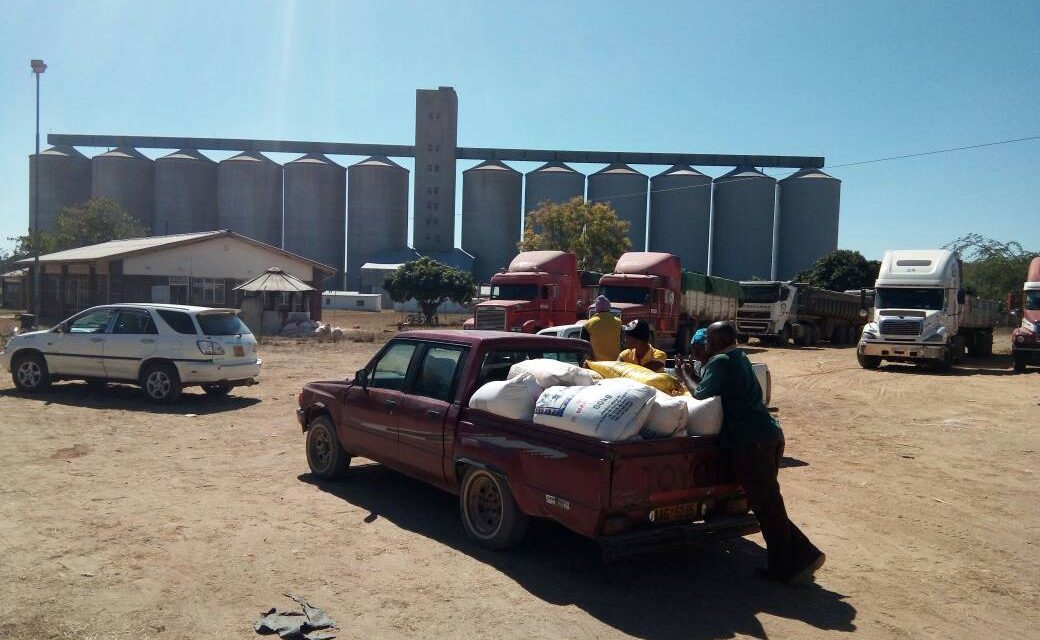Suspension of maize imports saves US$300m
ZIMBABWE will save over US$300 million following the move by the Government to suspend maize imports on the back of a bumper harvest the country has achieved this year.
Owing to successive droughts in recent years, Zimbabwe has been importing an average of 100 000 tonnes of maize per month from the region and as far as South America.
The Government lifted the ban on private grain sales in October 2019 and granted the nod to individuals and corporates with free funds to import quantities of their choice to complement Treasury’s efforts in ensuring adequate national grain reserves.
Zimbabwe requires about 1,8 million tonnes of maize annually and last year, because of poor rains received in the 2019 summer cropping season, only produced 907 628 tonnes.
According to the Second Round of Crop and Livestock Assessment Report for 2021 released recently, the estimated maize production stands at 2 717 171 tonnes, which is 199 percent of last year’s output.
In an interview, Reserve Bank of Zimbabwe (RBZ) Governor Dr John Mangudya confirmed the suspension of grain imports saying the bumper harvest meant the country would now save foreign currency and channel these resources to the productive sectors.
“We are now able to save US$300 million from the 100 000 tonnes of maize that we have been importing monthly,” he said.
“Therefore, what this means is that we now have to produce more as our productive sectors of the economy such as the manufacturing and agriculture will receive more foreign currency allocation through the auction system.”
The monetary authorities introduced the weekly Foreign Currency Auction Trading System last year in June, which has been highly successful in terms of its objectives to improve forex allocation to the productive sectors as well as stabilising the exchange rate.
At last week’s auction, a total of US$41,6 million was allotted to the productive sectors of the economy. Already, the Treasury has set aside ZWL$60 billion to enable the GMB to procure maize from farmers this marketing season and an initial ZWL$5 billion that is required in the first week of the season has been disbursed.
“This ZWL$60 billion required to pay the farmers is not going to be paid at once but over four to five months period of the entire selling season,” said Dr Mangudya.
“We sell the maize to the millers, and the millers also pay the money to the Government or GMB and, therefore, money circulates.”
He said the Apex bank was not going to print more money to finance maize purchases as money will be circulating.
“What the millers have done (mobilising $20 billion under a pre-payment arrangement with the Government to support maize procurement by GMB) is also commendable,” he said.
“They have to buy maize from GMB so that GMB is also able to use that money to pay the farmers who are delivering to GMB.”
During a Press conference in Bulawayo last week, the Grain Millers Association of Zimbabwe (GMAZ) chairman, Mr Tafadzwa Musarara, said millers have mobilised $20 billion under a pre-payment arrangement with the Government to support maize procurement by the GMB from farmers this selling season.
The resource from GMAZ under a pre-payment initiative is part of the $60 billion the Government has earmarked for grain procurement by the marketing board.
Mr Musarara said they have been informed that maize import permits have already stopped and all permits subsisting were expiring automatically on May 31.
“So, first of June there won’t be maize or maize meal imports into the country. They have been given a grace period just in case others would have paid and goods are in transit but the Government has already stopped issuing new permits,” he said.
“All import permits that were issued in the month of April are automatically expiring May 31, so we support the Government on that side.”
From June going forward, Mr Musarara said they hope the country would have more local maize inflows at GMB as moisture content starts to reduce to less than 13 percent and also mobile depots would have been put in place.
“On the price of a mealie-meal l think in June or July the retail price of a mealie meal will start going down.
“It’s just a normal standard economic practice that when supply is high, prices come down, some households especially in the urban areas have got maize so the demand for mealie-meal is going to be depressed,” he said.
GMAZ has also welcomed the new producer price of $32 000 per tonne, which the GMB was buying the maize at.
“If you convert it by either official or black-market exchange rate, the price there will come up to US$360 per tonne (official rate) and at black market rate over US$300 per tonne, making our farmers receive the highest price ever and not only in the region or in Africa, but in the world,” said Mr Musarara.
Over 60 000 tonnes of maize have been delivered to GMB since the start of the 2021 marketing season on April 1.
The selling season has opened with nearly 1 400 buying points established countrywide, and authorities are working on setting up an additional 400 selling points as the season progresses.
All 84 GMB depots have begun operating daily, including on weekends to facilitate uninterrupted grain deliveries with supplies expected to start picking up next month.-herald.cl.zw











